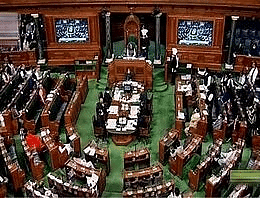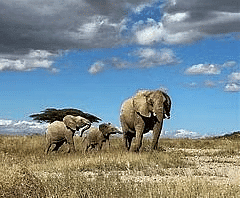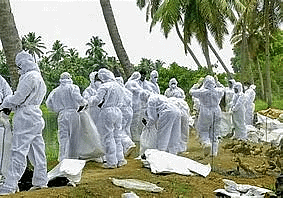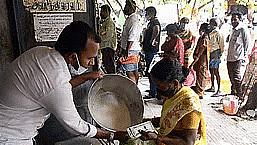UPSC Daily Current Affairs- 19th June 2024 | Current Affairs & Hindu Analysis: Daily, Weekly & Monthly PDF Download
GS3/Economy
Industry seeks removal of Angel Tax
Source: Indian Express

Why in news?
Indian businesses are urging for the elimination of the Angel Tax due to a significant decrease in startup funding and resultant job losses. The Confederation of Indian Industry (CII) has suggested the removal of Section 56(2)(viib) of the Income-tax Act, known as the 'Angel Tax,' in their recommendations for the Union Budget. They argue that abolishing this tax would greatly aid capital formation in the country.
Concerns raised by industries
Angel Tax is essentially the income tax payable on capital raised by unlisted companies through the issuance of shares in off-market transactions. This tax is imposed on capital raised through share issuance by unlisted companies from an Indian investor if the share price exceeds the fair market value of the company. The surplus amount is considered as income and taxed accordingly.
Explanation of Angel Tax
The term 'Angel Tax' derives from wealthy individuals ('angels') who invest significantly in risky, unproven business ventures and startups, particularly in their early stages before gaining widespread recognition.
Rationale behind the introduction of Angel Tax
Section 56(2)(viib) of the Income Tax Act, 1961, was incorporated in 2012 to prevent the laundering of black money and round-tripping through investments with substantial premiums into unlisted companies.
Budget 2023-24 and Angel Tax
Before Budget 2023-24, Angel Tax was applicable only to investments made by resident investors and not to investments made by non-residents or venture capital funds. The government exempted investments made by domestic investors in panel-approved companies from Angel Tax. Furthermore, government-recognized startups meeting specific criteria were also exempted from this tax.
Changes introduced in Budget 2023-24 with respect to Angel Tax
The Finance Bill, 2023, proposed amending Section 56(2) VII B of the Income Tax Act, expanding the ambit to include foreign investors. While foreign investors in government-recognized Indian startups are not subject to Angel Tax, the tax rate currently stands at 30.6%.
Recent developments regarding the Angel Tax
- Exemptions granted to investors from 21 countries
- Final valuation rules for foreign and domestic investors
- Clarification issued by CBDT
These changes in Angel Tax provisions arrived amidst significant layoffs in Indian startups and a notable decline in funding, emphasizing the urgent need for reform in this sector.
GS2/Polity
Who is the Pro-Tem Speaker of Lok Sabha and how is an MP chosen for the role?
Source: Hindustan Times

Why in news?
The 18th Lok Sabha will convene its first session very soon. A new Speaker of the House will be elected during this session. Until the election of the new Speaker, a pro-tem Speaker will be appointed to administer the oath to the new Members of Parliament.
Who is a Pro-tem Speaker?
- The Speaker of the Lok Sabha oversees the day-to-day proceedings of the House.
- According to Article 94 of the Indian Constitution, the outgoing Speaker continues in office until the first meeting of the new Lok Sabha.
- A pro-tem Speaker is appointed temporarily to manage certain duties until the new Speaker is elected.
- The Constitution does not explicitly mention this post, but the 'Handbook on the Working of the Ministry of Parliamentary Affairs' provides guidelines on the appointment and duties of the Speaker pro-tem.
Functions:
- The primary duty of the pro-tem Speaker is to administer oaths to the new MPs, as mandated by Article 99 of the Constitution.
Appointment of the Pro-tem Speaker
- When the Speaker's post is vacant before the new Lok Sabha convenes, the President appoints a Member of the House as the Speaker pro-tem.
- The President administers the oath to the Speaker pro-tem at the Rashtrapati Bhawan.
- Generally, three other elected members of the Lok Sabha are also appointed by the President to assist in the oath-taking process.
- The seniormost members, in terms of years of service, are usually chosen for this role, though there can be exceptions.
Process of Administering Oaths
- The Legislative Section of the Government of India prepares a list of the seniormost Lok Sabha members after the formation of the new government.
- This list is submitted to the Minister of Parliamentary Affairs, the Prime Minister, who identifies the Speaker pro-tem and the three other members for oath-taking.
- After the Prime Minister's approval, the consent of the selected members is obtained by the Minister of Parliamentary Affairs, usually over the telephone.
- The Minister then submits a note to the President seeking approval for the appointments and the date and time for the swearing-in ceremony.
- Upon the President's approval, the Ministry informs the Speaker pro-tem and the other members about their appointments and then administers the oath to the other three members in the Lok Sabha.
GS2/International Relations
G-7 Outreach Summit Apulia, Italy
Source: MSN

Why in news?
PM Modi was placed at centre stage for a group photograph at the G-7 Outreach Summit held in Italy. This marks India’s 11th participation in the G7 Summit and PM Modi’s fifth consecutive attendance.
About G-7 (Group of Seven)
The G7 is an informal bloc of industrialized democracies comprising the United States, Canada, France, Germany, Italy, Japan, and the United Kingdom (UK). It convenes annually to address global economic governance, international security, and more recently, issues related to artificial intelligence (AI).
Formation and Expansion:
- Originally formed as the Group of Six in 1975 by the United States, France, Italy, Japan, the UK, and West Germany, with Canada joining in 1976.
- Formed as a result of the oil crisis to stabilize global economic policies and international relations.
- The group’s formation coincided with the challenges of the Cold War era, aiming to address economic concerns such as inflation and recession exacerbated by the OPEC oil embargo.
Key statistics about G7 countries:
- Wealth: They control 60% of the global net wealth.
- Growth: They drive 46% of the global GDP.
- Population: They represent 10% of the world’s population.
Russia’s Joining and Suspension
- Russia joined in 1998, transforming it into the G8, aimed at enhancing its international prestige and fostering closer ties with Western nations.
- Russia was suspended in 2014 following its annexation of Crimea, leading to ongoing tensions and challenges with both Russia and increasingly, China.
Functioning of the G7
- Unlike formal institutions like the United Nations or NATO, the G7 lacks a charter and secretariat.
- Its presidency rotates annually (Canada in 2025), responsible for setting the agenda and logistical arrangements for the summit.
- Policy initiatives are crafted by ministers and envoys known as Sherpas, who prepare discussions and agreements before the annual gathering.
- Non-member countries are occasionally invited to participate in G7 meetings.
Why G7 needs India?
- Economic Significance and Democratic Stability: India’s regular participation in G7 meetings highlights its economic importance and stable democratic framework.
- Rising Economic Power: With India poised to become the world’s fourth-largest economy, its involvement in global issues is increasingly crucial.
- Leadership in the Global South: Modi’s initiatives, such as the Voice of the Global South Summit, have bolstered India’s global standing.
- G20 Presidency: India’s recent presidency of the G20 demonstrated its ability to build consensus on contentious global issues.
- Neutrality and Strategic Partnerships: India’s neutral stance on Western concerns over China’s actions in the South China Sea and its economic policies enhances its partnership with G7 nations.
- Balancing with Russia and the West: As the West confronts Russia over Ukraine, India’s neutral stance positions it as a key ally while maintaining diplomatic balance.
Divergence within G7
- Geopolitical Tensions: The G7 nations often face disagreements and tensions over geopolitical matters, such as responses to Russian aggression, conflicts in regions like Ukraine, and strategic alliances with emerging economies.
- Economic Policies: Economic policies and trade relations are frequent topics of debate within the G7. Issues include trade tariffs, market regulations, financial stability, and economic cooperation in the face of global economic challenges.
- Climate Change: Addressing climate change and achieving environmental sustainability are critical concerns for the G7. Discussions typically focus on climate action commitments, renewable energy investments, and international cooperation on climate policies.
- Security and Defense: Security and defence cooperation, including responses to global terrorism, cybersecurity threats, and military alliances, are important agenda items for the G7.
- Technology and Innovation: Managing technological advancements, including AI regulation, digital governance, cybersecurity standards, and technological innovation policies, is another area of focus.
- Social Issues: Social issues such as gender equality, human rights, immigration policies, and global development aid are also part of the G7 agenda, reflecting broader societal concerns and international commitments.
PYQ:
[2020] In which one of the following groups are all four countries members of G20?
- (a) Argentina, Mexico, South Africa and Turkey
- (b) Australia, Canada, Malaysia and New Zealand
- (c) Brazil, Iran, Saudi Arabia and Vietnam
- (d) Indonesia, Japan, Singapore and South Korea
GS3/Science and Technology
Scientists from India, China, U.K. Develop Catalyst to Produce Cheaper Biodiesel
Source: The Hindu

Why in News?
A team of scientists from Assam and Odisha in India, China, and the U.K. has developed a water-repellent catalyst that can cut the cost of producing biodiesel substantially from the current levels.
About Biofuel (Definition, Purpose, Types of Biofuels)
- Biofuel is a fuel that is produced over a short time span from biomass, rather than by the very slow natural processes involved in the formation of fossil fuels, such as oil.
- Since biomass can be used as a fuel directly (e.g., wood logs), some people use the words biomass and biofuel interchangeably. However, the word biofuel is usually reserved for liquid or gaseous fuels used for transportation.
- Most of biofuel consumption occurs as a blend with refined petroleum products such as gasoline, diesel fuel, heating oil, and kerosene-type jet fuel.
- However, some biofuels do not require blending with their petroleum counterparts and are referred to as drop-in biofuels.
Types of Biofuels
- Bioalcohols such as ethanol, propanol, and butanol (a substitute for petrol/gasoline)
- (a substitute for diesel)
- Bio-oils (substitutes for kerosene)
Generations of Biofuel
- First Generation (1G) biofuels are produced from consumable food items containing starch (rice and wheat) and sugar (beets and sugarcane) for bioalcohols, or vegetable oils for biodiesel. However, the yields of 1G biofuels are low and can have negative impacts on food security.
- Second Generation (2G) biofuels are mainly obtained from non-food feedstocks such as forest/industry/agricultural wastes and waste or used vegetable oils.
- Third Generation (3G) biofuels, known as 'algae fuel', are derived from algae in the form of both, biodiesel and bioalcohols. Although the yield of 3G biofuels is approximately 10 times higher than 2G biofuels, producing adequate algal biomass and scaling up extraction techniques are as yet unresolved challenges.
- Fourth Generation (4G) made using non-arable land. However, unlike the third, they do not need the destruction of biomass. This class of biofuels includes electro fuels and photo-biological solar fuels.
India's Biofuel Policy
In 2021-22, the Central government amended the Biofuel Policy (2018) to set a target of country-wide blending rates of 20% ethanol and 5% biodiesel by 2025. According to the Roadmap for ethanol blending in India 2020-2025 report from NITI Aayog, India will need to increase ethanol production capacity from the expected 3.3 billion liters (in 2020-2021) to at least 10.2 billion liters (5.5 billion liters from sugarcane and 4.7 billion liters from grains) by 2025. Supported by these policies, ethanol for blending in gasoline production and demand nearly tripled between 2018 and 2023 and now stands at near 12% (7% on an energy basis). Sugar cane provides most ethanol production with the remainder from food grains such as maize and surplus rice stocks determined by the Food Corporation of India.
Catalyst to Produce Cheaper Biofuel
A collaborative team of scientists from India, China, and the U.K. has developed a water-repellent catalyst that significantly reduces the cost of producing biodiesel. This innovative "spherical superhydrophobic activated carbon catalyst" is designed to withstand water byproducts generated during biodiesel production, mimicking the natural water-repelling properties of surfaces like lotus leaves. Currently, biodiesel production costs about ₹100 per liter in India, but the new catalyst could reduce this significantly.
GS3/Defence & Security
India’s First Joint Doctrine for Cyberspace Operations
Source: India Times

Why in News?
The Chief of Defence Staff General Anil Chauhan released India’s first joint doctrine for cyberspace operations, recognizing the significance of cyberspace as a crucial and challenging domain in contemporary warfare.
What is Cyber Warfare?
- Cyber warfare involves actions conducted in cyberspace by state or non-state actors that pose a serious threat to a nation’s security or are in response to perceived security threats.
- Cyberspace is a global domain with shared sovereignty, unlike traditional warfare domains.
Types of Cyber Warfare:
- Cyber terrorism: Involves premeditated disruptive activities with the intent to cause harm for various objectives.
- Cyber fraud: Aims at monetary or related gains for the perpetrators.
- Cyber spying: Focuses on acquiring information for the attackers.
- Cyber stalking or bullying: Designed to intimidate individuals.
Vulnerability of India to Cyber Attacks and its Cyber Security Challenges:
- The cyber security threats faced by India stem from various sources, targeting individuals, businesses, national infrastructure, and governments.
- In 2023, India saw a 15% increase in weekly cyberattacks per organization, making it the second most targeted nation in the Asia Pacific region.
- Challenges include inadequate human resources, infrastructure, research, and budget allocations to combat cyber threats.
- Threats from servers hosted outside India and challenges posed by imported electronics and emerging technologies like Cloud computing and IoT are significant.
Cyber Security Measures Taken by the Indian Government:
- Indian Computer Emergency Response Team (CERT-In): Central agency for incident response and security management in India's cyberspace.
- Cyber Surakshit Bharat: Aims to raise awareness about cybercrimes and cybersecurity challenges.
- Cyber Swachhta Kendra: Provides tools for malware analysis and enhances system security.
- National Cybersecurity Policy 2013: Framework for creating a secure cyber ecosystem.
- NCIIPC: Protects critical information infrastructure in the country.
- Indian Cyber Crime Coordination Centre (I4C): Handles cybercrime issues comprehensively.
GS3/Defence & Security
INS Sunayna in Port Victoria, Seychelles
Source: The Print

Why in news?
INS Sunayna, an Offshore Patrol Vessel based at Southern Naval Command, entered Port Victoria, Seychelles. The ship will undertake joint EEZ surveillance with the Seychelles Coast Guard during the deployment. The visit is aimed at further strengthening mutual cooperation in line with the vision of SAGAR (Security & Growth for All in the Region).
About INS Sunayna
- INS Sunayna is the second Saryu-class patrol vessel of the Indian Navy launched in 2009.
- It was designed and constructed indigenously by the Goa Shipyard Limited.
- It is designed to undertake fleet support operations, coastal and offshore patrolling, ocean surveillance and monitoring of sea lines of communications and offshore assets, and escort duties.
Key operations undertaken
- In June 2018, she was deployed to Yemen’s Socotra Island as part of “Operation Nistar”, an HADR mission to evacuate around 38 stranded Indian nationals in/around Socotra after a cyclone hit the area.
- INS Sunayna, along with INS Chennai, was sent to the Persian Gulf and Gulf of Oman in June 2019 to protect Indian shipping interests amid tensions in the Strait of Hormuz.
Back2Basics: SAGAR Strategy
- SAGAR stands for “Security and Growth for All in the Region.”
- It is a strategic policy framework initiated by India in 2015, designed to enhance its engagement with countries in the Indian Ocean Region (IOR) and neighbouring islands.
The primary objectives of SAGAR include:
- Security: Ensuring the safety and protection of India’s land and maritime territories, as well as its national interests in the IOR.
- Economic Growth: Promoting sustainable economic growth and development through collaborative efforts with IOR littoral states. This includes initiatives in marine biotechnology, ocean mineral resources, sustainable fishing practices, and ocean energy.
- Disaster Management: Facilitating collective action and providing assistance to IOR countries during natural disasters, thereby fostering regional cooperation and goodwill.
- Sustainable Development: Supporting initiatives for sustainable regional development, including marine research, eco-friendly industrial technologies, and the conservation of the maritime environment.
PYQ:
- What are the maritime security challenges in India? Discuss the organisational, technical, and procedural initiatives taken to improve maritime security.
- Consider the following in respect of the Indian Ocean Naval Symposium (IONS):
- Inaugural IONS was held in India in 2015 under the chairmanship of the Indian Navy.
- IONS is a voluntary initiative that seeks to increase maritime cooperation among navies of the littoral states of the Indian Ocean Region.
GS3/Environment
Elephants have names for each other: What a new study says
Source: Indian Express

Why in news?
Recent studies utilizing artificial intelligence (AI) tools have revealed that elephants possess unique names used to address each other, placing them among the select animals with this ability. Unlike animals such as parrots and dolphins, elephants do not imitate the calls of those they address, resembling humans in this communicative trait.
Naming Behavior in Elephants
Unlike humans, elephants do not mimic the calls of the addressee, setting their communication apart from other animals. Published in Nature, the study titled ‘African elephants address one another with individually specific name-like calls’ involved researchers from institutions like Colorado State University and Save The Elephants.
Study Methodology
- Communication Methods: Contrary to popular belief, elephants predominantly communicate through low-pitched rumbles rather than trumpets, which are primarily emotional expressions.
- Data Analysis: Researchers analyzed recordings of wild female African savannah elephants and their offspring’s rumbles across various Kenyan national parks spanning from 1986 to 2022.
- AI Application: Using AI technology, they scrutinized 469 recorded rumbles to detect patterns indicating specific recipients of the communication.
- Success Rate: The AI model successfully identified the intended elephant recipient in 27.5% of cases, surpassing chance levels.
Observations
- Behavioural Observation: To validate their findings, researchers played back recorded rumbles to 17 elephants and noted heightened reactions when elephants heard their ‘names’, indicating recognition of individual names.
- Unique Communication: Unlike animals that imitate others’ calls, elephants display no evidence of imitation, suggesting a unique communication strategy.
Significance of the Study
The study underscores elephants’ advanced communication abilities, challenging previous assumptions about their cognitive prowess. It draws parallels between human and elephant communication, fostering greater admiration for elephants and potentially mitigating human-elephant conflicts crucial for conservation efforts.
Future Research
- Sophisticated Communication: Further investigation is warranted to pinpoint the exact location of elephant names within rumbles and explore whether elephants assign names to objects besides individuals.
Back2Basics: Elephants in India
Details
- Population Estimate: India hosts the largest population of wild Asian Elephants (Elephas maximus), with around 29,964 individuals, approximately 60% of the global population (2017 census).
- Leading States: Karnataka holds the highest number of elephants, followed by Assam and Kerala.
- Conservation Status: IUCN Red List - Endangered, CMS - Appendix I, Wildlife (Protection) Act, 1972 - Listed under Schedule I, CITES - Conservation Initiatives
Conservation Initiatives
- Project Elephant was launched in 1992, covering 23 states across India.
- Contributed to the increase in wild elephant population from around 25,000 in 1992 to about 30,000 in 2021.
- Establishment of Elephant Reserves: Total 33 in numbers covering approximately 80,777 Sq.km.
GS2/Governance
Why caste should inform debates on inequality in the country
Source: Indian Express

Why in news?
A recent working paper from the World Inequality Lab has sparked renewed debate about the growing divide between the rich and the poor.
Disparities in consumption patterns among different socioeconomic groups reflect differences in income, access to resources, or purchasing power:
Population vs. Consumption Share:
- Scheduled Tribes (ST): Despite making up 9% of the population, their consumption share is only 7%.
- Scheduled Castes (SC): Represent 20% of the population but have a consumption share of 16%.
- Other Backward Classes (OBC): Align more closely with their population percentage, constituting 43% of the population and a 41% consumption share.
- General Category: Comprises 28% of the population but commands a significantly higher consumption share of 36%.
Reduction in Consumption Inequality:
- The overall Gini coefficient decreased from 0.359 in 2017-18 to 0.309 in 2022-23. Gini coefficients for ST, SC, OBC, and General categories also saw reductions, indicating a slight improvement in the equitable distribution of consumption within these communities.
- Economic Disparities Among Social Groups:
- The bottom 20% decile experienced a decrease in consumption levels for ST, SC, and OBC groups, although marginally. The General category saw a more pronounced decrease in consumption levels among the poorest segment, highlighting a relative decline in consumption among this group.
- Concentration of Wealth in Higher Deciles:
- Consumption has increased for all social groups in the top 20% decile. The General category experienced a significant 10 percentage points surge in consumption between 2017-18 and 2022-23, implying a potential concentration of wealth among high-caste elites and persistent economic disparities.
Efforts to Augment Income Generation Abilities:
- Targeted Policies:
- Reservation: Affirmative action programs to improve opportunities for SCs, STs, and OBCs.
- Rural Development Initiatives:
- Policies aimed at enhancing infrastructure, education, and healthcare in rural areas.
- Direct Benefit Transfers (DBT):
- Financial aid is directly transferred to beneficiaries to ensure they receive the intended benefits without middlemen.
- Focus on Lower Deciles:
- Emphasis on increasing income generation and consumption abilities, particularly within the lower deciles of SC, ST, and OBC communities—the importance of fostering social harmony and economic stability through equitable income distribution.
- Monitoring and Intervention:
- Continuous monitoring of consumption trends and economic disparities. They are implementing targeted interventions addressing the specific socio-economic challenges faced by different groups to ensure sustained progress towards economic equity.
Way forward:
- Strengthen and Expand Affirmative Action Programs: Enhance and rigorously implement affirmative action policies such as reservations in education and employment for SCs, STs, and OBCs. This should include increasing access to quality education, vocational training, and skill development programs to empower these communities economically and socially.
- Promote Inclusive Economic Development Initiatives: Implement comprehensive rural development initiatives that focus on improving infrastructure, healthcare, and education in marginalized areas.
GS3/Science and Technology
Does H5N1 pose a threat for humans? | Explained
Source: The Hindu

Why in news?
The highly pathogenic avian influenza (HPAI) H5N1's spread to cattle and first human cases in U.S. dairy workers heighten fears of wider human transmission.
- Recent Infections: Three cases of human infection in dairy farm workers were reported in the U.S., indicating the potential for the virus to spread from cattle to humans.
- Transmission: The virus appears to spread to humans who are in close interaction with infected birds or animals without adequate personal protection.
- Current Risk Level: Scientists note that the virus currently lacks changes that would make it better adapted to human-to-human transmission, keeping the risk to human health low. However, the potential for the virus to rapidly evolve remains a concern.
What is the strategy to identify and contain the spread of the virus?
- Surveillance in Kerala: Kerala has implemented a community-based disease surveillance network involving 2.5 lakh volunteers trained in the 'One Health' concept across four districts: Alappuzha, Pathanamthitta, Kottayam, and Idukki.
- Early Warning System: These volunteers report any unusual events or deaths of animals/birds in their locality, allowing for early warning and prompt preventive or control measures.
- Global Coordination: There is a call for a robust and coordinated response to H5N1, as emphasized in a recent editorial by The Lancet.
What is the concept of 'One Health'?
'One Health' Concept: 'One Health' is an approach that recognizes the interconnection between people, animals, plants, and their shared environment, emphasizing the need for collaborative efforts across different sectors to achieve optimal health outcomes.
Implementation of the 'One Health' concept in Kerala
- Kerala has operationalized the 'One Health' concept through the World Bank-aided 'Rebuild Kerala' project. This involves a community-based disease surveillance network where volunteers are trained to monitor and report on animal and bird health, ensuring early detection and response to potential outbreaks.
Other Operational Measures:
- The state has taken proactive steps beyond the conceptual framework of 'One Health' by establishing an on-ground, volunteer-driven network for disease monitoring and control.
Way forward:
- Strengthen Global Surveillance and Collaboration: Enhance international cooperation for surveillance, data sharing, and rapid response mechanisms to monitor and control the spread of H5N1, leveraging the 'One Health' approach for coordinated action across human, animal, and environmental health sectors.
- Implement Rigorous Biosecurity and Safety Protocols: Ensure strict biosecurity measures and personal protective equipment (PPE) for workers in close contact with animals, particularly in high-risk areas, to prevent zoonotic transmission and reduce the potential for human infections.
Mains PYQ:
- The public health system has limitations in providing universal health coverage. Do you think that the private sector can help in bridging the gap? What other viable alternatives do you suggest?
GS2/Polity
Time for a Census, come what may
Source: The Hindu

Why in news?
Why has the 2021 Census been delayed for so long? One plausible explanation is that the Bharatiya Janata Party (BJP) is postponing the Census to expedite the “delimitation” process in preparation for the 2029 Lok Sabha elections.
Delimitation Commission
- The 84th Amendment of the Constitution specifies that the next delimitation exercise must be based on the first census conducted after 2026.
Delimitation Based on Census
- If the next census occurs before 2026, delimitation would be delayed until after the subsequent census in the 2030s.
Impact on State Representation
- Delimitation aims to adjust the shares of different states in Lok Sabha seats to match their population shares and ensure similar population sizes across constituencies.
- The upcoming delimitation is expected to favor northern states with faster population growth since 1973, potentially at the expense of southern states.
About the 106th Amendment
- Passed in September 2023, this amendment provides for one-third reservation of seats for women in the Lok Sabha and State Assemblies.
- The reservation is to come into effect “after an exercise of delimitation is undertaken for this purpose after the relevant figures for the first census taken after [2023] have been published.”
- The phrase “for this purpose” suggests that women’s reservation could be implemented through its own delimitation exercise, separate from the broader delimitation mandated by the 84th Amendment.
- This allows for the possibility of initiating women’s reservation based on an early census, without waiting for the larger delimitation exercise.
Overall Implications
- Delimitation is expected to shift more Lok Sabha seats to northern states with higher population growth, potentially reducing the representation of southern states.
- Southern states may react negatively to losing representation, which could lead to increased regional tensions and opposition to the BJP in these areas.
- Postponing the census could delay the implementation of the 106th amendment, which mandates one-third reservation for women in the Lok Sabha and State Assemblies.
- Updated Census data are crucial for implementing welfare schemes and ensuring that resources are allocated based on the most recent population figures, affecting the access of millions to essential services.
Way forward
- Ensure the 2021 Census is conducted promptly to provide accurate data for welfare schemes and fair resource allocation, benefiting millions of citizens who rely on updated population figures for essential services.
- Implement women’s reservation through a separate delimitation exercise as allowed by the 106th Amendment, enabling the reservation to take effect without waiting for the broader delimitation mandated by the 84th Amendment.
Mains PYQ
- Discuss how empowering women is key to controlling population growth.
GS3/Environment
Strategic imperative and environment concern in Great Nicobar project
Source: Indian Express

Why in news?
The primary opposition party has raised serious concerns about the proposed Rs 72,000-crore development plan on Great Nicobar Island, citing the potential threat it poses to the indigenous population and delicate ecosystem of the region. They have urged an immediate suspension of all project approvals and a comprehensive, unbiased review by the relevant Parliamentary committees.
Great Nicobar Island project
Geographical location
- Great Nicobar, situated as the southernmost island in the Andaman and Nicobar archipelago.
- The Andaman and Nicobar Islands comprise approximately 836 islands located in the eastern Bay of Bengal.
- Separated by the 150-km wide Ten Degree Channel, with the Andaman Islands to the north and the Nicobar Islands to the south.
- Indira Point, located at the southern tip of Great Nicobar Island, marks India's southernmost point, situated less than 150 km from the northernmost island of the Indonesian archipelago.
Ecosystem
- The Great Nicobar Island features tropical wet evergreen forests, mountain ranges reaching heights of nearly 650 m above sea level, and coastal plains.
- The island is home to two national parks and a biosphere reserve, hosting numerous endangered species, with the leatherback sea turtle being a prominent flagship species.
Tribes of Nicobar
- The Shompen and Nicobarese tribal communities inhabit Great Nicobar.
- The Shompen, a group of hunter-gatherers, rely on forest and marine resources for their sustenance.
- Most of the Nicobarese population, who resided along the west coast of the island, were relocated following the 2004 tsunami.
- Presently, an estimated 237 Shompen and 1,094 Nicobarese individuals inhabit a 751 sq km tribal reserve, with a proposal to denotify around 84 sq km of this area.
Background
In November 2022, the Ministry of Environment granted environmental clearance for the ambitious Rs 72,000 crore multi-development projects on Greater Nicobar Island. This initiative was launched following a report by NITI Aayog, which highlighted the potential to capitalize on the island's strategic location.
Proposal
The Great Nicobar Island (GNI) project is a comprehensive endeavor intended for implementation at the southern extremity of the Andaman and Nicobar islands. It encompasses various components such as an international container trans-shipment terminal, a greenfield international airport, township development, and a 450 MVA gas and solar-based power plant, covering an area of 16,610 hectares on the island. The port will be under Indian Navy's supervision, while the airport will serve both military and civilian purposes, including tourism.
Why government is keen to develop this Island?
Economic reasons
- The government aims to exploit the strategic location of Great Nicobar for economic and strategic benefits.
- Great Nicobar's central location between Colombo, Port Klang, and Singapore positions it close to the East-West international shipping corridor, a critical route for global maritime trade.
- The proposed International Container Transshipment Terminal (ICTT) has the potential to emerge as a pivotal point for cargo ships traversing this route, enhancing the island's participation in regional and global maritime commerce.
Strategic & Security reasons
- The significance of developing Great Nicobar for national security and the consolidation of the Indian Ocean Region has been underscored since the 1970s.
- Rising Chinese influence in the Bay of Bengal and Indo-Pacific has heightened the urgency of this initiative.
- India is concerned about Chinese naval presence near key choke points like Malacca, Sunda, and Lombok, emphasizing the need for a robust military presence at Great Nicobar to safeguard national security.
Concerns
Threat to Island Ecology
- The proposed extensive infrastructure development in this ecologically vital and fragile region has raised alarms among environmentalists.
- The deforestation resulting from the project could not only impact the island's flora and fauna but also lead to increased runoff and sedimentation in the ocean, affecting the local coral reefs.
- There are concerns about the potential destruction of mangroves on the island due to the development, which could endanger species like the Nicobar Megapode bird and leatherback turtles in the Galathea Bay area.
Impact on Indigenous People
- Critics argue that the Shompen, a particularly vulnerable tribal group, with a population of a few hundred individuals residing in a tribal reserve on the island, will bear the brunt of the project's adverse effects.
- They assert that the project violates tribal rights and that the Tribal Council of Great and Little Nicobar Islands was not adequately consulted during the planning stages.
- In November 2022, the council withdrew a no-objection certificate for diverting approximately 160 sq km of forest land, citing incomplete information provided.
Seismic Concerns
- Experts have highlighted the seismic vulnerability of the proposed port site, which experienced a permanent subsidence of around 15 feet during the 2004 tsunami.
National Green Tribunal's intervention
- In April 2023, the Kolkata Bench of the National Green Tribunal declined to intervene in the environmental and forest clearances granted for the project.
- However, it mandated the establishment of a high-power committee to review these clearances, though the status of the committee's report remains uncertain.
|
63 videos|5408 docs|1146 tests
|
FAQs on UPSC Daily Current Affairs- 19th June 2024 - Current Affairs & Hindu Analysis: Daily, Weekly & Monthly
| 1. What is Angel Tax and why is the industry seeking its removal? |  |
| 2. Who is the Pro-Tem Speaker of Lok Sabha and how is an MP chosen for the role? |  |
| 3. What was discussed at the G-7 Outreach Summit in Apulia, Italy? |  |
| 4. What is the significance of the joint development of a catalyst by scientists from India, China, and the U.K. for producing cheaper biodiesel? |  |
| 5. Why is it important for caste to inform debates on inequality in the country? |  |
















